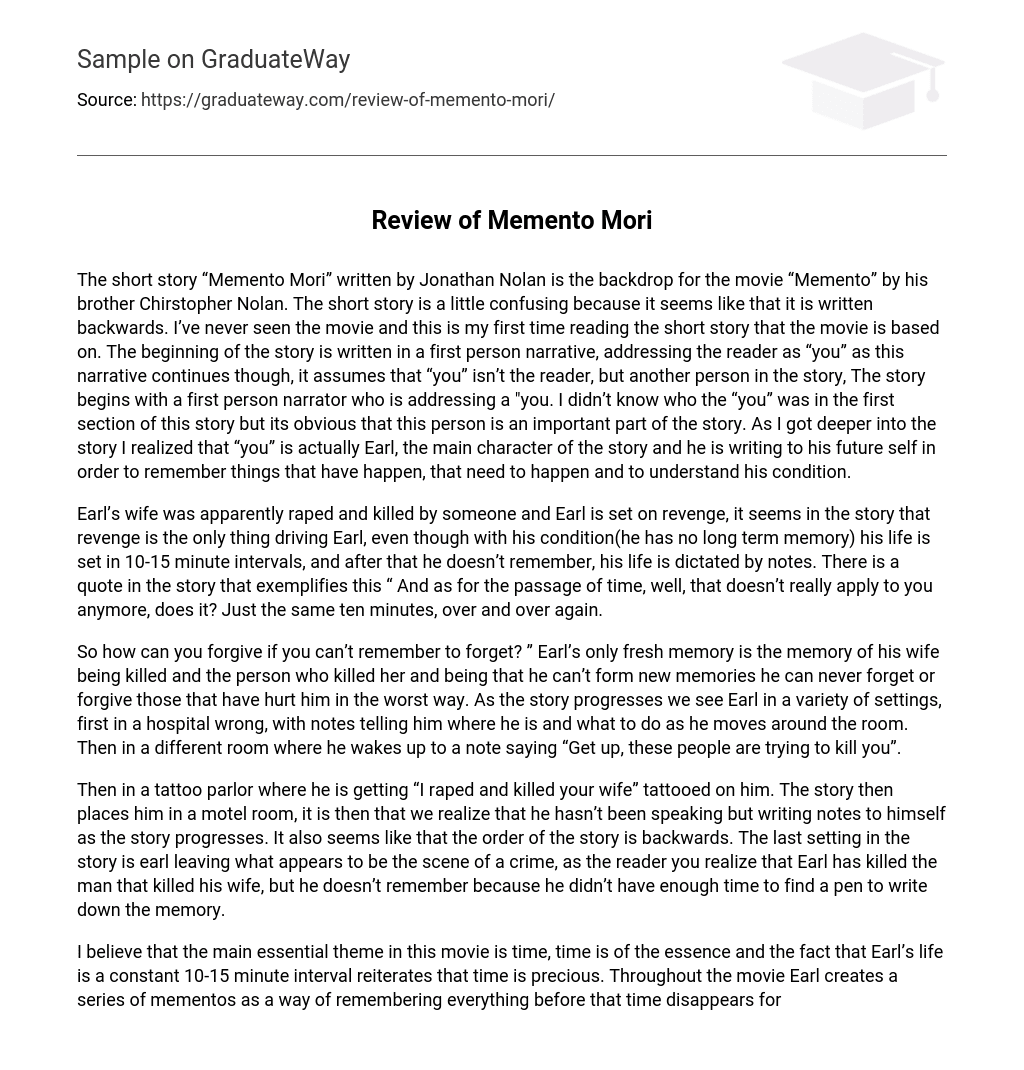The short story “Memento Mori” by Jonathan Nolan is the inspiration behind the film “Memento” by Christopher Nolan. Despite its unconventional reverse order, I am reading the short story for the first time as I have not seen the movie before. The story is initially narrated in a first person perspective with the narrator addressing someone as “you.” However, it becomes clear that this “you” is actually another character within the story, later identified as Earl – the protagonist. Earl writes letters to his future self in order to recall past events, upcoming ones, and make sense of his condition.
Earl’s wife was reportedly raped and murdered, and Earl is determined to seek revenge. The story suggests that revenge is the sole motivation for Earl, despite his condition of having no long-term memory. His life is divided into 10-15 minute intervals, after which he does not remember anything and relies on notes to guide him. The story includes a quote that captures this: “And in terms of the passing of time, that no longer applies to you, does it? Just those same ten minutes, repeated endlessly.”
Earl cannot forget or forgive the person who killed his wife, as he suffers from the inability to form new memories. His only fresh memory is of his wife’s death. Throughout the story, we witness Earl in different settings, starting with a hospital room where he relies on notes to navigate his surroundings. Later, he wakes up in another room to a warning note that reveals people are attempting to harm him.
The story centers on Earl, who is getting a tattoo at a tattoo parlor. The tattoo reads “I raped and killed your wife.” Earl communicates with himself using written notes instead of speaking. The story unfolds in reverse chronological order. In the last scene, Earl leaves what appears to be a crime scene, revealing that he has killed the man accountable for his wife’s death. However, Earl cannot remember this incident because he didn’t have enough time to find a pen and write down the memory.
The central theme of this film revolves around the significance of time. Earl, the main character, structures his life in 10-15 minute intervals to highlight the value of time. He crafts souvenirs to commemorate fleeting moments that will eventually fade away. To retain memories despite his memory loss condition, he employs tattoos for the most important experiences. These keepsakes aid him in achieving his objective of locating and eliminating the individual accountable for his spouse’s demise.
This brief narrative is a captivating portrayal of the significance of time and the memorable experiences that occur within it. The story’s title, when loosely translated, reminds us to not forget about our mortality. The author skillfully transforms this concept into a remarkable piece of literature. Personally, I have always believed that every individual yearns to truly embrace life, recognizing the value of each passing moment. This story seamlessly aligns with my belief system, reaffirming that we are indeed constantly striving to make the most of our existence, cherishing every significant instant.





